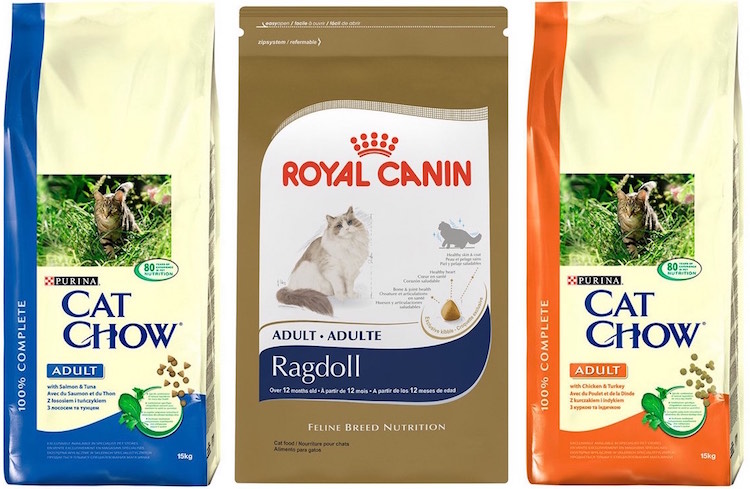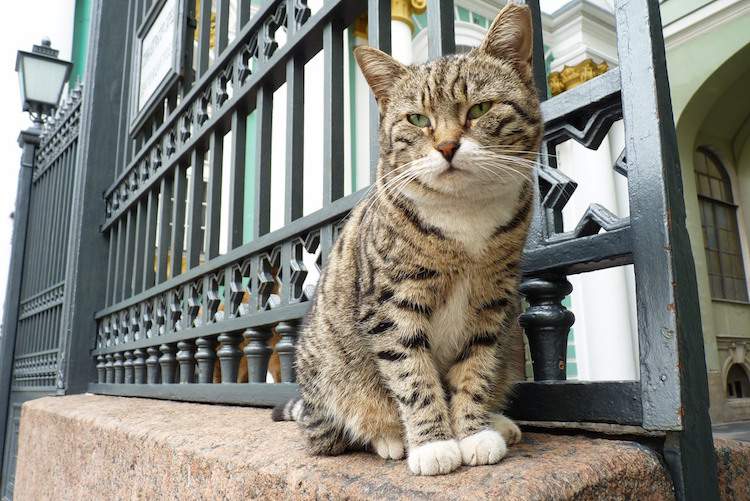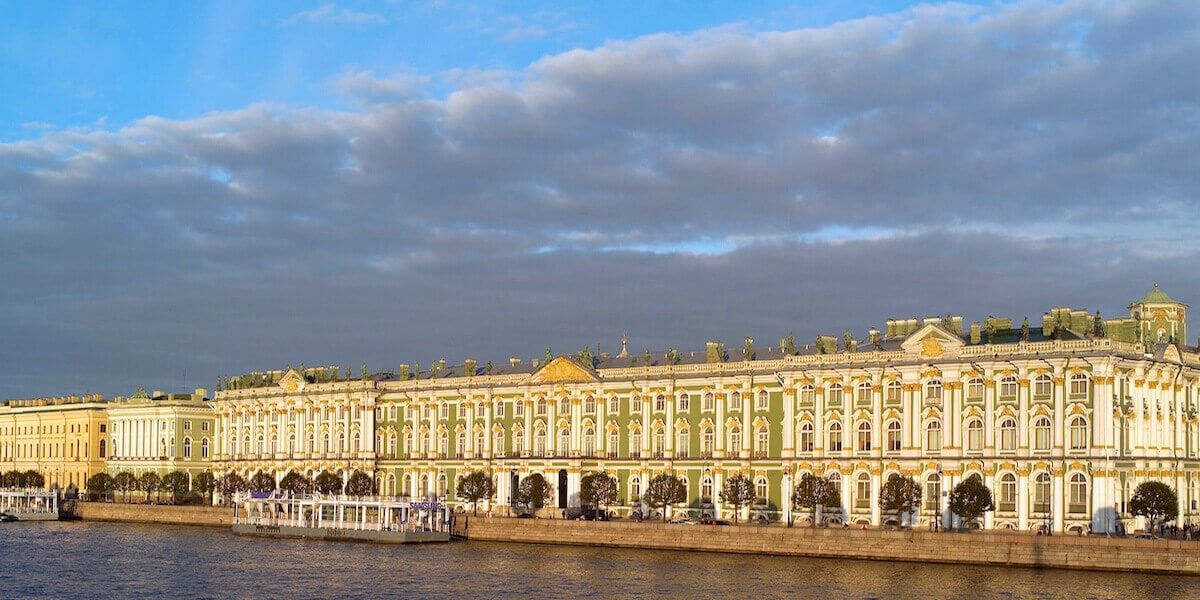You love long, balmy Northern summer nights? History and culture? And purring felines? St. Petersburg is the place for you!
Much has been said and written about St Petersburg, Russia’s second largest city. Built in 1702 by Tsar Peter the Great as a convenient seaport for his maritime ambitions, and catapulted into world history by Catherine the Great some 60 years later, the world’s northernmost large city has an architectonic and cultural heritage that few others can compare with.
The recently restored splendor of its palaces, museums, gardens, and churches are unparalleled, its bridges and canals have rightfully earned it its nickname of the Venice of the North, and its artistic and cultural wealth puts it squarely in the Top 10 worldwide.
And yet, one of the biggest attractions is not manmade but comes at you softly and quietly on velvety paws: The Court Cats of the Hermitage (also known as Ermitage) Museum.
These felines who enjoy the rarefied privilege of dwelling in the gardens and premises of one of the world’s most eminent museums, are the spiritual descendants of the first pair that Empress Elisabeth adopted back in 1745 … not as cuddly pets, but to control the growing mouse and rat population. But cats do what cats do, and the original pair quickly started a family. A couple of feline generations later, the mistress of the manor, residing two floors above her four-legged housemates, noticed the trend and put a categorical stop on it. Henceforth, Fluffy and his harem could still peacefully hang out in the basement and go about their daytime job of catching rodents, and they were still allowed to produce one generation of offspring to keep the population at a handy size, but then were sterilized. This arrangement worked out well for the next 200 years. Sadly though, during World War II, the entire feline crowd at the Hermitage shared the tragic fate of most St Petersburg residents, and did not survive.
After the war, the original population was replaced by another tribe but these were mostly left to fend for themselves until in the 1990s, some doting museum workers started a campaign to feed and care for them. Today, a reasonably healthy and well-controlled population of some 60-70 felines, with the occasional addition of a sneaky stray from the neighbourhood, enjoys the comfort of cuddles, regular meals cooked in an onsite kitchen specifically set aside for this purpose, and vet check-ups at a small “hospital”.

And not only that – today the museum also has a press secretary dedicated to the furballs, and three employees acting as official caretakers. Funds for that come partly from donations from the staff and visitors, but also from monthly contributions by German charity Pro Animale and a sponsorship by Royal Canin/Purina Cat Chow.
Being so used to people, these cats do not mind hanging out with strangers and rolling up on unsuspecting tourists’ laps, and it has happened on occasions that one of them purred their way into a human’s heart and got adopted out. Since 2011, there is even an annual Catfest to honour these sweet and useful four-legged residents of the Hermitage.
Art experts and cat lovers alike cannot disagree that among the many masterpieces of the Hermitage museum, these loveable treasures are some of the most unique and special ones.

CONTACT DETAILS
State Hermitage Museum
Palace Square, 2
St Petersburg
Russia 190000
![]()
Lead image by Godot13 (Own work) [CC BY-SA 3.0], via Wikimedia Commons; Hermitage cat by ewwl – http://fotki.yandex.ru/users/ewwl/view/325997, CC BY-SA 3.0



Leave a Reply